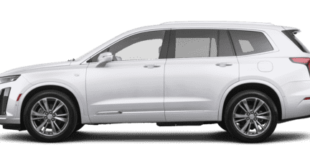A few automakers are taking advantage of Earth’s vast aquatic playgrounds by making boat engines. Honda’s the big one, offering more than 20 flavors of outboard engines. Some are built for comfort, others for speed. A few are derived from the 1.5-liter in the previous-gen Fit; some others, the 2.4-liter in the seventh-gen Accord. And Honda’s most powerful boat engine—a 250-hp 3.6-liter V-6—is based on a stroked version of the 3.5-liter found in the second-gen Odyssey. To make these engines work in the marine world, some big changes must happen.
Sump Pump
In a car, an engine sits with its crankshaft parallel to the ground and (normally) mates directly to a transmission. In its outboard life, the engine’s crank is perpendicular to the water and directly turns the prop shaft. With the engine rotated this way, Honda had to relocate the oil pan and pump to the place where a transmission would traditionally bolt to the block.
Here, Cool Off
Honda’s boat engines are cooled by the water they operate in, and since lakes and oceans differ considerably, engineers need to account for a wide range of conditions. An impeller sucks and pushes water up through the marine-specific block and cylinder heads. On its inline-fours, Honda fits a thermostat where water exits the block and another where it exits the head in order to control for Arctic or Caribbean water temperatures. On V-6s, each head gets a thermostat (in addition to the block) to allow the engine to maintain a proper balance of cooling between the heads.
The Moving Stuff
The crankshaft, connecting rods, pistons, camshafts, and valvetrain are all derived from their automotive counterparts.
No Smoking
Outboard-engine emissions fall under the EPA’s umbrella, so stinky exhaust and smoky startups are a big no-no. With the engine raised in a tripod stance like an animal on its hind legs, oil is prone to seep into the cylinders. Honda uses marine-specific piston rings to abate this and prevent smoke.
Corrosion Deterrent
To stop saltwater and freshwater from destroying the aluminum components, Honda coats the cooling passages with an anodic film to prevent corrosion. Additionally, the blocks and heads feature sacrificial anodes to attract corrosive elements.
Pimp My Ride
Looking to blow a few million? Luxury boat builder HCB will fit not one but five Seven Marine 627sv outboards on the transom of its posh 65-foot center-console yacht.
The 627sv starts out as a GM-sourced supercharged 6.2-liter V-8—just like the one in the second-gen Cadillac CTS-V—but it gets a custom camshaft, modified cylinder heads, and a smaller supercharger pulley.
As its name suggests, the small-block makes 627 horsepower. It will burn 1.1 gallons of 89 octane every minute at full tilt. Volvo Penta, Seven Marine’s parent company, also employs GM’s 4.3-liter V-6 and 5.3- and 6.2-liter V-8s for inboard applications.
This content is created and maintained by a third party, and imported onto this page to help users provide their email addresses. You may be able to find more information about this and similar content at piano.io



